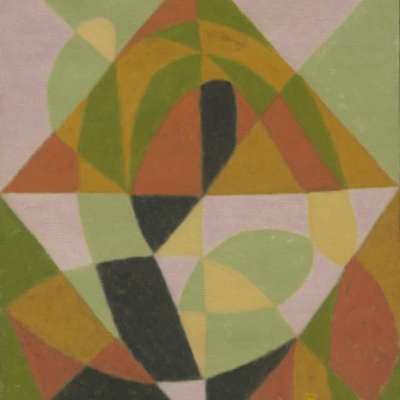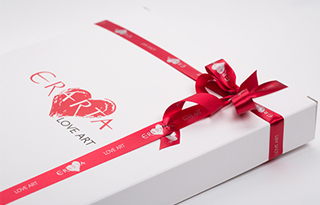Zubkov Gennady
Gennady Zubkov was born in 1940 in Perm, Russia, which has now become one of the cultural epicenters of contemporary Russian art. In 1968 Zubkov graduated from the Painting and Graphic Department of the Herszen State Pedagogical University, Leningrad, which is one of the most prestigious art institutes in Russia.
The formal education not only gave Zubkov the fantastic classical training as an artist but also presented him with an incredible opportunity of establishing a close relationship with Vladimir Sterligov (1904 – 1973), who became his close friend and mentor. Sterligov, prior to being one of the distinguishing members of the faculty of the Herzen academy, was a founding member of his own school of artistic thought and expression- the Sterligov group. Not only was this a significant influence upon Zubkov, but also the artistic community in Russia at the time in general. Sterligov himself was personally taught by Kazimir Malevich, who not only aided him in early figurative works but also in rigid philosophical context, which Malevich himself deemed to be vital for any artistic pursuit in general.
More specifically, the tutorage that Zubkov received from Sterligov occurred between 1963 and 1973, allowed the former to gain an in-depth understanding of the vital artistic movements that dominated the early twentieth century art world. Hence, Impressionism, Cubism, Fauvism and above all Suprematism were all brought to Zubkov’s attention during his study.
Consequently to this particular tutelage, Zubkov went on to develop a technique lessons and methodology of form and color based on his lessons with Sterligov between 1976 and 1980. This in itself was revolutionary at the time, because the type of artistic expression that Zubkov pursued was unlike anything that was witnessed by the Russian art community at the time. Subsequently to this personal pursuit, in 1977 Zubkov he derived a new painting technique ‘form creates form’ which he applied to his still lifes and landscapes. This unique and historically pivotal technique can be reviewed and studied within the collection of Zubkov that is present in Erarta galleries.
From 1986 to present, Zubkov has been teaching painting to young artists, as his personal involvement and relationship with Sterligov has allowed him to comprehend that mentoring has a fundamental impact upon the development and discovery of young talent. Zubkov’s professorship also allowed him to found the artistic groups ‘Form+Color and ‘April 17’, between 1995 and 1998, in co-operation with the prominent young artists.
Zubkov has been exhibiting worldwide and has had over 150 personal and group exhibitions.

Gennady Zubkov was born in Perm (en route to Leningrad) in 1940 and subsequently lived and worked in St. Petersburg, where he died in 2021.
Selected Solo Exhibitions
-
2010 – Futorology / Russian Utopias. Joint project with Sergei Bugaev (Afrika). Garage Center for Contemporary Culture, Moscow;
-
2010 – Almaty: Light filled Mountains. Gallery 12 June, Foundation for the Development of the Visual Arts, St. Petersburg;
-
2010 – Beginnings. S.P.A.S. Gallery, St. Petersburg;
-
2010 – Form + Color. Erarta, Museum and Galleries of Contemporary Art, St. Petersburg;
-
2009 – Calderara di Reno, Galerie Blue Square, Paris, France;
-
2008 – Retrospective 1967–2007. Galerie Blue Square, Paris;
-
2007 – Transit. Klaus Spermann Gallery, Berlin;
-
2007 – S. P. A. S. Gallery, St. Petersburg;
-
2007 – 25 Years. Nicole Netuschil Gallery, Wermelskirchen, Germany;
-
2006 – Nature of Eternal Feminity, Cultural Palace KINEF, Kirishi, Russia;
-
2005 – Summer 2005, Montenegro. S. P. A. S. Gallery, St. Petersburg;
-
2004 – Paintings and Graphics of Gennady Zubkov. Masters Guild Gallery, St. Petersburg;
-
2003 – Gennady Zubkov: Paintings. Gallery On Obvodny, St. Petersburg;
-
2002 – Made in America: Before and After September 11. Exhibition Hall of St. Petersburg Artists Union, St. Petersburg;
-
2001 – Gennady Zubkov, Paintings and Graphics from St. Petersburg. Nicole Netuschil Gallery, Wermelskirchen, Germany;
-
2000 – The Day Before Yesterday, Yesterday, Today. S. P. A. S. Gallery, St. Petersburg;
-
2000 – Exhibition in Dolhausen. Bochum, Germany;
-
2000 – Gennady Zubkov, Paintings and Graphics. Nicole Netuschil Gallery, Wermelskirchen, Germany;
-
2000 – Impressionistic Cubism. Masters Guild Gallery, St. Petersburg; Exhibition Hall of A. S. Pushkin Museum, Mikhailovskoye, Russia;
-
1999 – Impressionistic Cubism. Dianne Beal Contemporary Art, Washington, D. C, USA;
-
1999 – Papaver L. (Botanic Lessons): One Picture Exhibition. State Russian Museum, St. Petersburg, Russia;
-
1995 – In Martini’s Family Garden. Bochum, Germany;
-
1994 – Impressionism Today. State Russian Museum, St. Petersburg, Russia;
-
1993 – En Plein Air and in the Studio. Smolny Cathedral Exhibition Hall, St. Petersburg, Russia;
-
1991 – Gennady Zubkov: Painting and Graphic Art. WIVI Gallery, Finland;
-
1989 – Gennady Zubkov: The Third Wave of the Russian Avant-Garde. Exhibition hall of the New Valaam Monastery, Finland;
-
1988 – Gennady Zubkov. Leningrad. Hagelstam Gallery, Helsinki, Finland;
-
1983 – Evidence of Things Not Seen: Gennady Zubkov and the Leningrad Sterligov Group. Curated by Charlotte Douglas and Margarita Tupitsyn. Contemporary Russian Art Center of America, New York, USA;
-
1967 – First exhibition of paintings based on Sterligov’s methods. The exhibition was held at the studio of one of Sterligov’s students, Leningrade, Russia.
Selected Public and Private Collections
-
State Russian Museum, St. Petersburg, Russia;
-
Pushkin Museum of Fine Arts, Moscow, Russia;
-
State Museum of St. Petersburg History, St. Petersburg, Russia;
-
Jane Voorhees Zimmerli Museum, New Brunswick, New Jersey, USA;
-
Museum of Contemporary Art, Kolomna, Russia;
-
Museum of Nonconformist Art, St. Petersburg, Russia;
-
Yaroslavl Art Museum, Yaroslavl, Russia;
-
Art Museum of the Republic of Karelia, Petrozavodsk, Russia;
-
Tomsk Regional Art Museum, Tomsk, Russia;
-
Kemerovo Regional Art Museum, Kemerovo, Russia;
-
Novosibirsk State Picture Gallery, Novosibirsk, Russia;
-
Arkhangelsk Art Museum, Arkhangelsk, Russia;
-
Checkpoint Charlie Museum, Berlin, Germany;
-
A. Kasteyev State Museum of Art, Almaty, Republic of Kazakhstan;
-
Kirov Regional Art Museum, Kirov, Russia;
-
Perm State Art Gallery, Perm, Russia;
-
National Art Gallery, Yoshkar-Ola, Mari El Republic, Russsia;
-
Art Museum of the Republic of Tatarstan, Kazan, Russia;
-
S. P. A. S. Gallery, St. Petersburg, Russia;
-
Kolodzei Collection of Russian and Eastern European Art, Kolodzei Art Foundation, USA;
-
Diaghilev Art Foundation, St. Petersburg, Russia.





